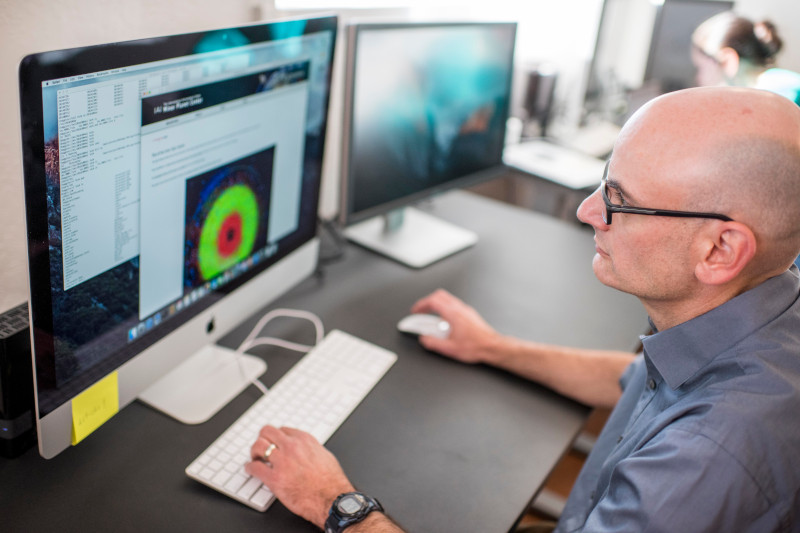As with most scientific disciplines, leaders in the field of astronomy are looking for ways to ensure that students from traditionally minoritized populations have ample opportunities to participate in research and contribute to the advancement of science. Northern Arizona University professor David Trilling, chair of the Department of Astronomy and Planetary Science, is one of the leaders of a major new project funded through a $900,000 grant from the Heising-Simons Foundation. The project’s goal is to increase the readiness of astronomy researchers from minority communities for an upcoming effort designed to lay the groundwork for the launch of the Vera C. Rubin Observatory.
Located on the Cerro Pachón ridge in north-central Chile, the revolutionary facility is designed to open up new opportunities to study a wide variety of astrophysical phenomena. Although it is currently under construction, plans are in place for the observatory’s highly anticipated 10-year Legacy Survey of Space and Time (LSST) project to begin in 2024. The groundbreaking survey will transform many areas of astrophysics by delivering a 500-petabyte set of images and data products—high cadence, multi-color, optical lightcurves—for a vastly larger population of objects than it has ever been possible to observe. These images will enable scientists to address some of the most pressing questions about the structure and evolution of the universe and the objects in it.
Because preparatory research is especially critical for the time-variable and moving object observations conducted through projects like the LSST, the scientific community must be ready before the survey starts. As members of a broad network of scientists who are working to prepare thousands of researchers worldwide to participate in the LSST, Trilling and several other astronomers spearheaded an effort to secure funding that would help ensure all researchers have an equitable opportunity to participate in laying the groundwork for the age of the Rubin Observatory, enabling a broader community to more fully harness its enormous scientific potential.
“Our proposal to the Heising-Simons Foundation was focused on increasing the readiness of minority communities for the LSST project,” Trilling said. “NAU is unusual in that we are both a Hispanic-Serving Institution and a research institution where significant LSST-related astronomy research is already taking place, so it is a great opportunity for us to participate.”
The grant will be led and administered by the Las Cumbres Observatory in Goleta, Calif., a global robotic telescope network dedicated to time domain astronomy. The grant funds will be used to facilitate progress in research for all member scientists and overcome common barriers to entry for contributors from all backgrounds.
“Through this program, the whole community will have the chance to kickstart research programs to maximize the scientific return of the Rubin Observatory,” Trilling said. “People from all over the world can apply for small grants to do LSST-related work that will increase inclusion and training opportunities. Faculty researchers at NAU can apply for these grants to help train undergraduate students, including those from minority backgrounds.”
Kerry Bennett | Office of the Vice President for Research




